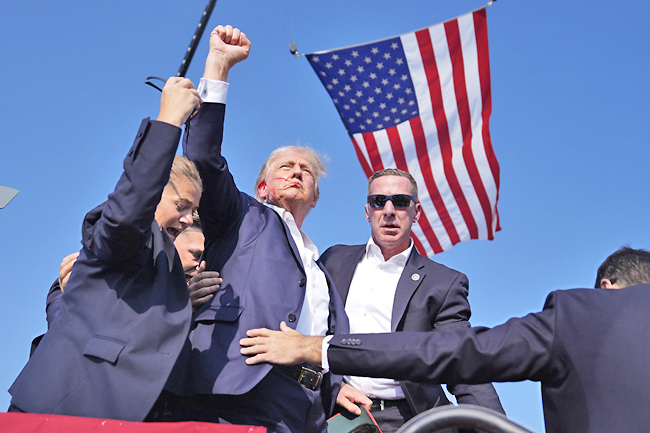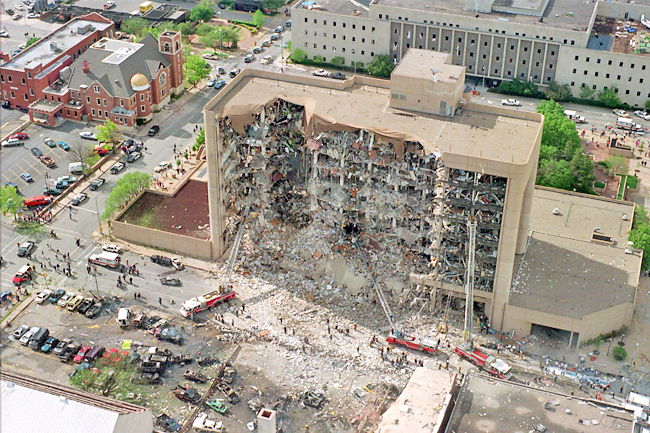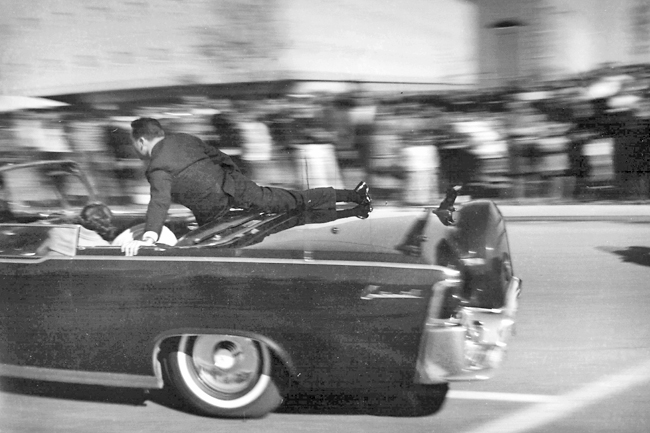WASHINGTON (AP) – During Abraham Lincoln’s presidency, anyone could come to the White House and see him. Come they did: mothers looking to have their sons released from military service, wives urging that their husbands be freed from prison after resisting the draft, others who simply wanted to meet the president.
“Some only wanted comfort in a terrible time, and that he freely gave,” James B Conroy wrote in his book Lincoln’s White House: The People’s House in Wartime.
The world has vastly changed since the 1860s, and so has protection for presidents.
Protective details have grown in size, responsibility and technology over more than a century of the Secret Service protecting presidents.
When presidents leave the White House, they are accompanied by a phalanx of Secret Service officers and agents. Cars can no longer drive past what is often dubbed “the people’s house” at 1600 Pennsylvania Ave. The fence has been raised, and don’t even try to get past the gate without an appointment or badge.
The number of people under guard also has grown as vice presidents, former presidents, candidates, family members and more get protection.
During the Civil War, Lincoln was hesitant to make the White House look like an armed camp, but in late 1864 several police officers were assigned to guard him, the White House Historical Association said. President Franklin Pierce was the first to have a full-time bodyguard, in 1853.

at a campaign rally in the United States recently. PHOTO: AP

It wasn’t until 1901, after President William McKinley was assassinated, that Congress asked the Secret Service – originally a Treasury Department division that went after counterfeiters – to take up the charge of protecting the commander in chief.
Since then, protective details have grown and evolved, often in response to assassinations, close calls or other major security events. Former Secret Service agents say the agency is studying the attempt on former president Donald Trump’s life at a rally in Pennsylvania a week ago and making changes to adjust to it.
The attempt to kill president Ronald Reagan in 1981 is often cited as a turning point in how the Secret Service operates.
Reagan was coming out of the Washington Hilton hotel when John Hinckley Jr opened fire from a crowd of onlookers and journalists just 15 feet away. Hinckley got off six shots before Secret Service officers tackled him. The last shot ricocheted off a limo and into Reagan.
Some of the changes that followed aren’t so obvious to the outside observer but still critical. For example, the Secret Service started assigning an agent to the small group of reporters who travel with the president so they would know whether someone was infiltrating the group.
After Reagan’s shooting, presidents also were driven into buildings through underground parking garages. When that’s not possible, a cover is erected around the entrance to obstruct the line of sight as the president gets into or out of a vehicle.
“Nobody walks through the front door any more,” said retired supervisory Secret Service agent Bobby McDonald, now a criminal justice lecturer at the University of New Haven.
“Presidents and protectees of the Secret Service have seen more loading docks and have walked through more kitchens than ever before.”
Joseph LaSorsa, a retired Secret Service agent who served from 1976 to 1996 and was on Reagan’s protective detail, said the post-Reagan era also saw the increased use of metal detectors for crowds approaching the president to eliminate the possibility of a weapon getting into the “secure area” around the leader.
Changes also followed the assassination of John F Kennedy in 1963 as he drove through Dallas in a convertible, former agents say. Presidents no longer sit in open vehicles but wave to onlookers through the thick glass of a heavily armoured limousine nicknamed “the beast”.
Former agents also say the focus on advance work before trips increased significantly and more was done to secure routes taken by the motorcades.
The White House also has seen changes designed to make it more secure.
On one day in May 1995, an estimated 26,000 cars drove along Pennsylvania Avenue past the White House. The next day, the street was eerily quiet after workers stacked concrete barriers at each end to cut off access.
Mounting security concerns a month after the Oklahoma City bombing at a federal building prompted the closure. There were other changes, too, such as air traffic restrictions after a small plane crashed into the White House lawn in 1994. As well, gunfire twice hit the mansion that same year.
Then-president Bill Clinton said closing the street was necessary to protect against the kind of attack seen in Oklahoma City but vowed that “people’s access to the White House and their president” would not be impeded. He even vowed that protesters would still have the right to walk up to the White House property. Many still do.
Thomas Jefferson first encircled the White House with a wooden post and rail fence around 1801. He replaced that with a stone wall by 1808, which wasn’t great at offering views.
To deter fence jumpers, sharp metal points were installed in 2015, and later the height doubled to roughly 13 feet. Under that later renovation, the space between the bars got slightly wider – just enough to allow a wee or naughty child to squeak through.
Increased security around the president inevitably expands the distance from Americans.
While people can still visit the White House, they must request tours through their congressional member and submit their identification information to the Secret Service ahead of time.
Paul Eckloff, a retired Secret Service agent who served on details protecting three presidents during his 23-year career, said he often hears people say the president shouldn’t do outdoor rallies or should be kept away from people.
He understands the tradeoff – more security means more separation between the president and the people. As an agent, Eckloff said, he always considered his job not as protecting the person but the office of the presidency. – Rebecca Santana


